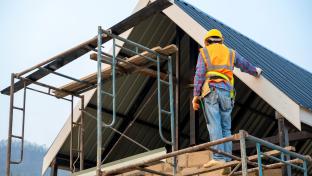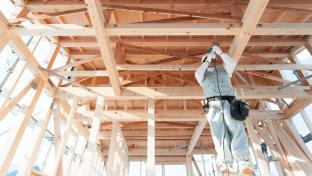JCHS: Pricing pressure in the forecast
According to the Harvard Joint Center for Housing Studies (JCHS), the nation’s housing market is at an “inflection point” after a record-shattering performance in 2021.
Higher interest rates are cooling off the home buying market while a large number of apartments under construction should bring some relief on the rental side.
But for lower-income households and households of color the pressure of high housing costs is unlikely to relent.
Released today by the JCHS, The State of the Nation’s Housing 2022 points to the surging prices of gas, food, and other necessities making matters worse.
Although demographic shifts are favorable, unemployment is low, and wage growth remains strong, housing demand hinges directly on the ability of fiscal policymakers to successfully cool inflation without causing a recession, the JCHS noted.
“There is also the longstanding challenge of producing affordable homes, given the high cost of building materials and land as well as the shortage of labor,” says Chris Herbert, managing director of the center. “The lessons learned during the pandemic have led to a number of proposals to greatly expand the housing safety net and provide increased support for first-generation homebuyers. While these measures have yet to be implemented, it is important to continue the policy debate over the best approaches to making housing affordable for all.”
Home price appreciation nationwide increased 20.6% in March 2022, marking the largest jump in three decades, and is continuing to rise. The runup has been widespread, with 67 of the top 100 housing markets experiencing record-high appreciation rates, the JCHS said.
According to the most recent existing-home sales report from the National Association of Realtors, total sales fell for a fourth straight month in May and declined 3.4% as existing single-family home sales were down 3.7% from the prior month and 7.7% from April 2021.
The median existing single-family home price reached $414,200 in May, up 14.6% from May 2021.
Rents are also up, rising 12% in the first quarter of 2022 with increases in several metro areas exceeding 20%.
“Rents for single-family homes rose even faster, pushed up by increasing demand for more living space among households able to work remotely,” says Daniel McCue, a senior research associate at the Center. “Adding to the pressure, investors moved aggressively into the single-family market over the past year, buying up moderately priced homes either to convert to rental or upgrade for resale.”
After trailing the pace of household growth for almost a decade, residential construction has finally picked up. Single-family starts hit 1.1 million in 2021, exceeding the million-unit mark for the first time in 13 years.
Multifamily starts were also at a 30-year high, but supply-chain delays have lengthened the time to completion, leaving some 1.64 million homes still under construction in April 2022, which was higher than at any time since 1973. Together with climbing interest rates, the strong pipeline of new housing should help to slow the rise in home prices and rents.
With interest rates rising, on top of double-digit home price increases, the income and savings needed to qualify for a home loan have skyrocketed, raising the financial hurdles for first-time and middle-income buyers.
Potential homebuyers saw monthly mortgage payments on the median-priced U.S. home rise by more than $600 over the past year.
“At today’s prices, the typical down payment that a first-time buyer would need for a median-priced home is $27,400,” says Alexander Hermann, a senior research analyst at the Center. “Without help from family or other sources, this would rule out 92% of renters, whose median savings are just $1,500.”
In the meantime, rapid home price appreciation has widened the wealth gap between homeowners and renters. At last measure in 2019, the median wealth of homeowner households was $254,900—about 40 times the $6,270 median wealth for renter households. Because of their relatively low homeownership rates, many Black and Hispanic households missed out on these equity gains.
The JCHS said the racial/ethnic disparities are troubling among those who do own homes. In 2019, the median net wealth of Black homeowners ($113,100) was just over a third of that of white homeowners ($299,900) and the median net wealth of Hispanic homeowners ($164,800) was still roughly half of white homeowners. The disparities reflect consistently lower home valuations in neighborhoods that are predominantly Black or Hispanic, according to the JCHS
Click here to download the full report from the JCHS.






